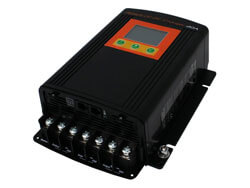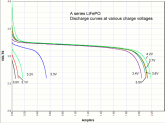strollingbones
New Member
- Joined
- Sep 21, 2020
- Messages
- 7
Hi Gang! Newbie here and this is my first post. I have extensively RTFF and learned a lot. Thanks!
Quick Backstory
I have a Roadtrek Class B motorhome with a state of the art electrical system. State of the art for the year 2000, that is. So my Covid-19 project is to upgrade it all.
So my Covid-19 project is to upgrade it all.
Currently, the alternator charges both the starter and the house batteries. There is an isolator that prevents the house electrical from draining the starter battery.
Now I am considering upgrading my batteries to LiFePO4, and I understand this system might not cut it anymore. Some experts believe LiFeP04s can draw so much current when charging that they damage the alternator. They advise installing a DC>DC charger, like this one, to regulate current draw from the alternator to the batteries.
My Questions
#1) Do I correctly understand the situation and the role of the DC>DC charger?
#2) If I install a DC>DC charger, do I remove the 20 year old battery isolator? Or do I use them both somehow?
Thanks in advance for your assistance!
Quick Backstory
I have a Roadtrek Class B motorhome with a state of the art electrical system. State of the art for the year 2000, that is.
Currently, the alternator charges both the starter and the house batteries. There is an isolator that prevents the house electrical from draining the starter battery.
Now I am considering upgrading my batteries to LiFePO4, and I understand this system might not cut it anymore. Some experts believe LiFeP04s can draw so much current when charging that they damage the alternator. They advise installing a DC>DC charger, like this one, to regulate current draw from the alternator to the batteries.
My Questions
#1) Do I correctly understand the situation and the role of the DC>DC charger?
#2) If I install a DC>DC charger, do I remove the 20 year old battery isolator? Or do I use them both somehow?
Thanks in advance for your assistance!
Last edited:







